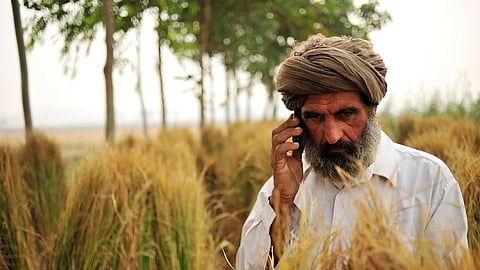Effective Content Monetization through Hyperlocal Journalism
Amidst the brouhaha over the death of newspapers and the struggles of digital publications, a critical development in the digital publishing landscape has gone unnoticed.
The rise of hyperlocal news platforms.
These platforms focus on stories and issues of interest only to people in a very limited geographical area. This phenomenon of widespread adoption of hyperlocal news platforms in India gives publishers profound insight into shifting consumption patterns of their audience.
The shift to hyperlocal
Two key factors have made hyperlocal news platforms a success: lack of wholesome coverage of regional news stories and rapid rural internet penetration and usage.
Leading national media houses focus on stories of interest to the whole country. Their coverage of events happening in smaller cities is either missing or is sparse. This creates a vacuum in news coverage for people belonging to these communities.
“The thought process of people in smaller and remote areas is like — ‘I am more concerned about my community as I want to live here my entire lifetime. Government schemes, local happenings affect me directly’,” said Jani Pasha, co-founder of Lokal, a hyperlocal video news startup.
Hyperlocal journalism is an innovative way of informing people about what is happening closest to them. These platforms often are the only source of original reporting in a community. Beyond providing information, these outlets are of enormous social value to the community they serve. They help create inclusive communities and crystallize public opinion by driving important conversations.
Digital revolution in India
The widespread availability of affordable smartphones and cheaper mobile data plans has led to a sudden surge in non-English speaking Internet consumers. Local language audiences are expected to make up 80% of the 800 million internet user base by 2021. This surge has created a huge market for Indian-language content, especially for video content. Creating content for this emerging section are hyperlocal news apps like Knocksense (Lucknow, Jaipur, Indore & Kanpur), LocalPlay (Moradabad, Meerut, Amroha & Sambhal), Circle (Sultanpur, Bikaner, Idukki, etc.), Lokal (Kurnool, Chittoor, Guntur, Siddipet, Nalgonda, etc.) and Awaaz (Jhansi, Samastipur, Gaya, etc.).
These platforms are working towards solving the information gap that exists in mainstream media. By collaborating with on-ground and citizen reporters, in-depth coverage on city issues emerge. Platforms like Knocksense inform people of events taking place in the city. They believe that this will give a much-needed boost to struggling local businesses. Despite being new, most of these hyperlocal platforms are expanding at a steady rate. Within 2 months of its launch Lokal has had 4000-5000 downloads and Awaaz has over 100K+ downloads till date. With the growing demand for hyperlocal content, publishers can look forward to monetize soon.
Revenue generation
Media houses have been facing tremendous resistance to implementation of digital subscriptions and paywalls. With free information floating on the internet, Indians do not want to pay for news. In this aspect, hyperlocal news outlets have an edge over mainstream news outlets. By offering unique information which is not found elsewhere, they have the potential for successful subscription models. When it’s business-oriented or specific to somebody’s area of work.” People will pay for hyperlocal news as it affects them and they care about the communities they live in.
“Subscription works when the product is of tangible benefit to the reader. When it’s business-oriented or specific to somebody’s area of work.”
Meera K, co-founder of Citizen Matters
As hyperlocal news platforms reach a small, well-defined population. This makes them attractive to local advertisers as small businesses want that kind of targeting. Along with paywalls, subscriptions and advertising revenue, hyperlocal platforms can also gain support through grants from foundations, crowdfunding campaigns and audience donations.
Even big names like Facebook have acknowledged the power of local publishers. Last year, Facebook launched an initiative called ‘Local News Subscription Accelerator’ to empower metro newspapers in the US.
Whenever paywalls and subscriptions models are implemented, publications observe a fall in readership. But, the ones that stick around make for a loyal and engaged audience. Hyperlocal news platforms can cultivate such a dedicated audience by organizing community-based events. Since, the aim of these platforms is to inform small communities while evoking a sense of oneness, such events will correlate well with their brand. Anokhi Club, a unique initiative of the Hindustan Newspaper and Star Plus to empower women, is a great example. The club has been organizing a series of talks and events across various the country over the last 5 years.
Hyperlocal news platforms could be the answer to the monetizing problem of digital publications. They can leverage their invaluable content to persuade audiences to start paying for news.

